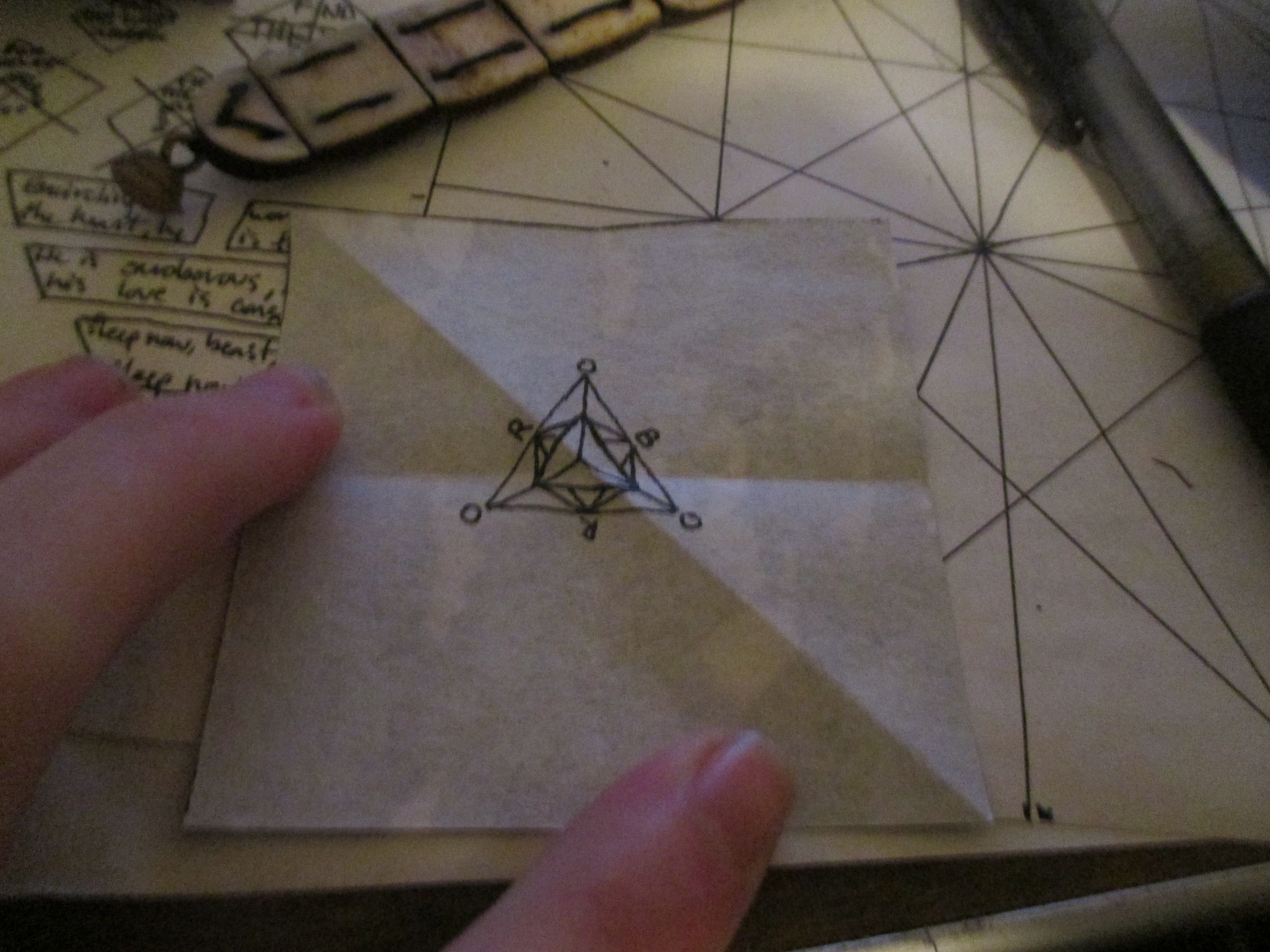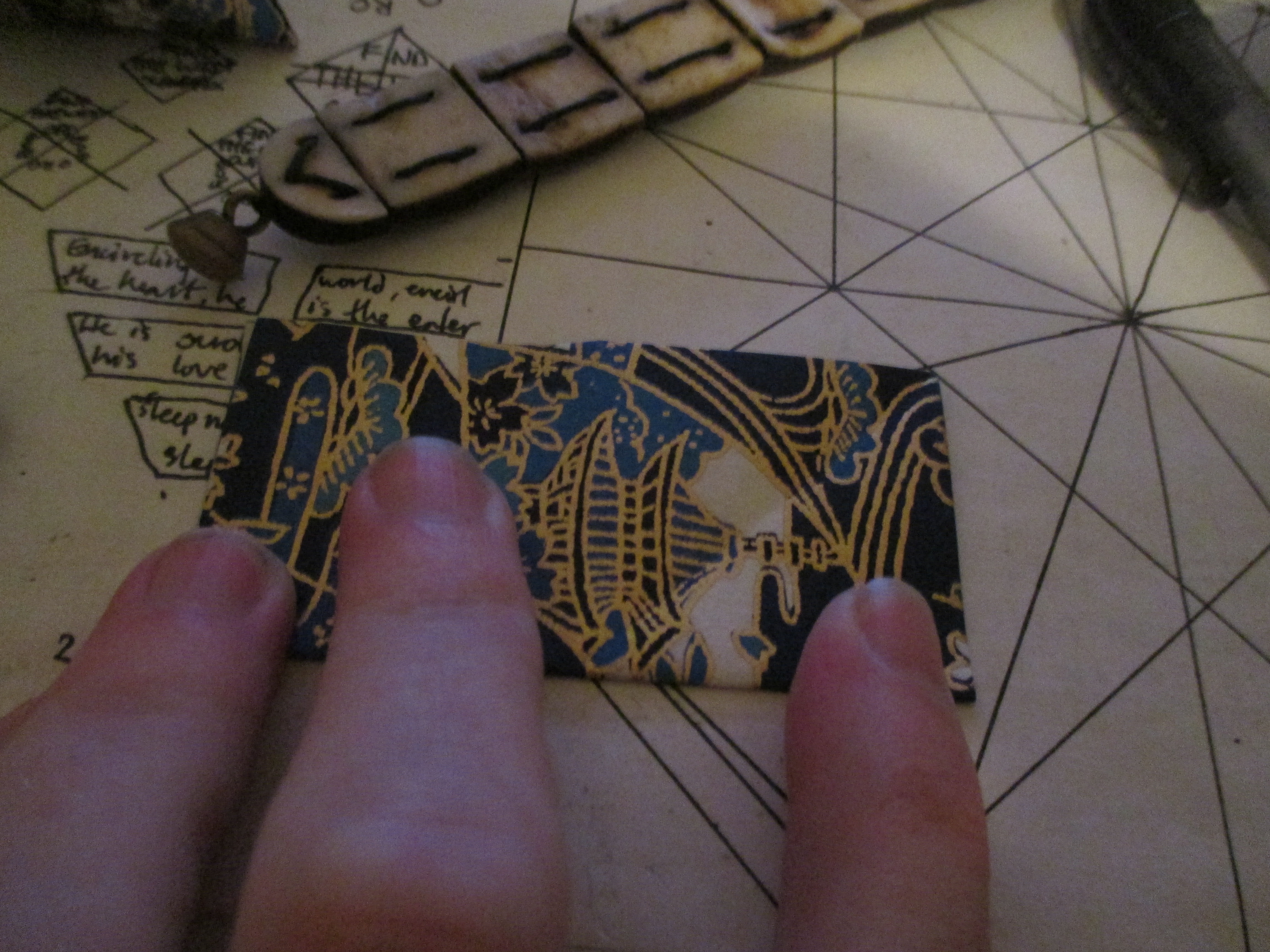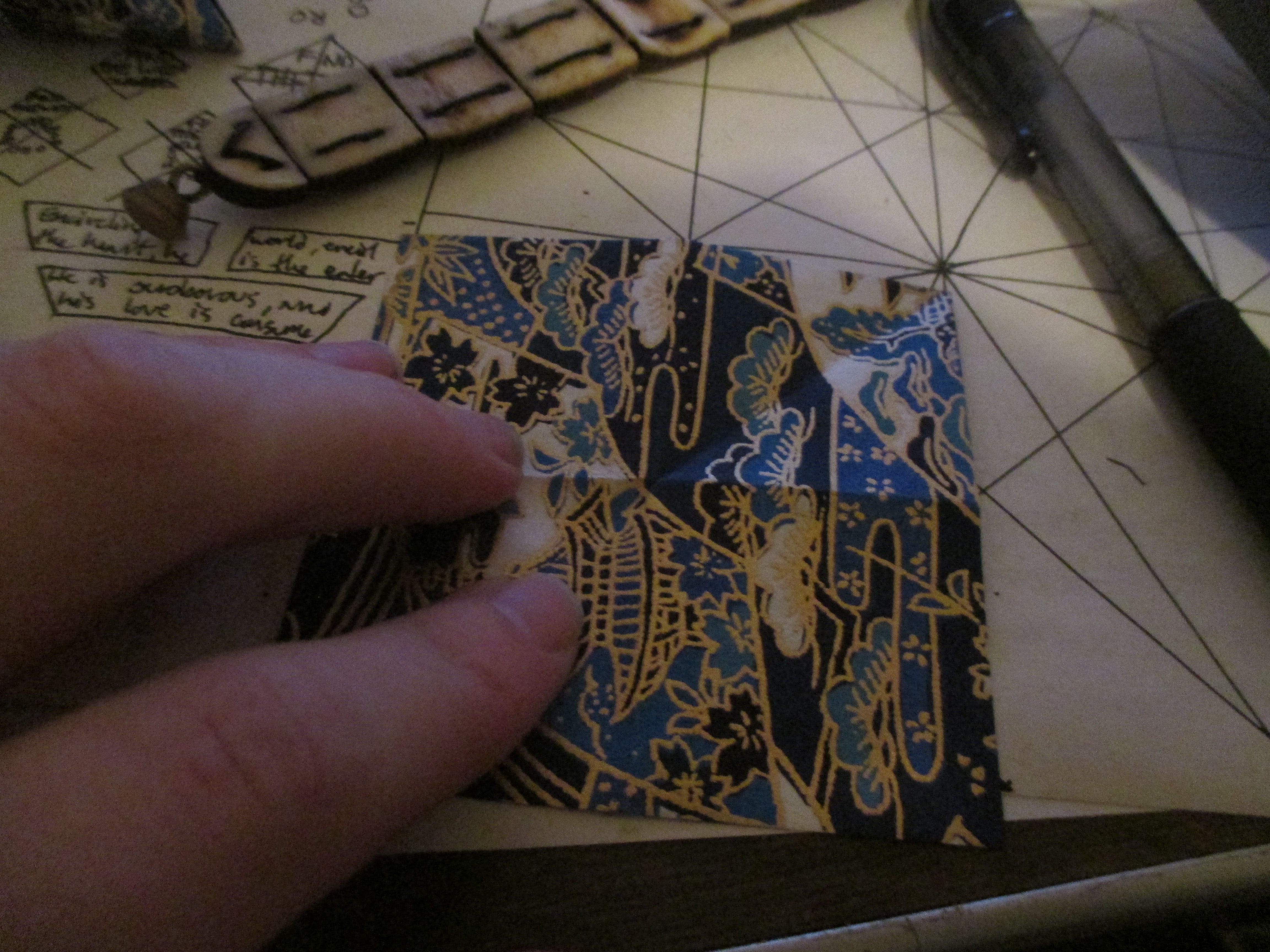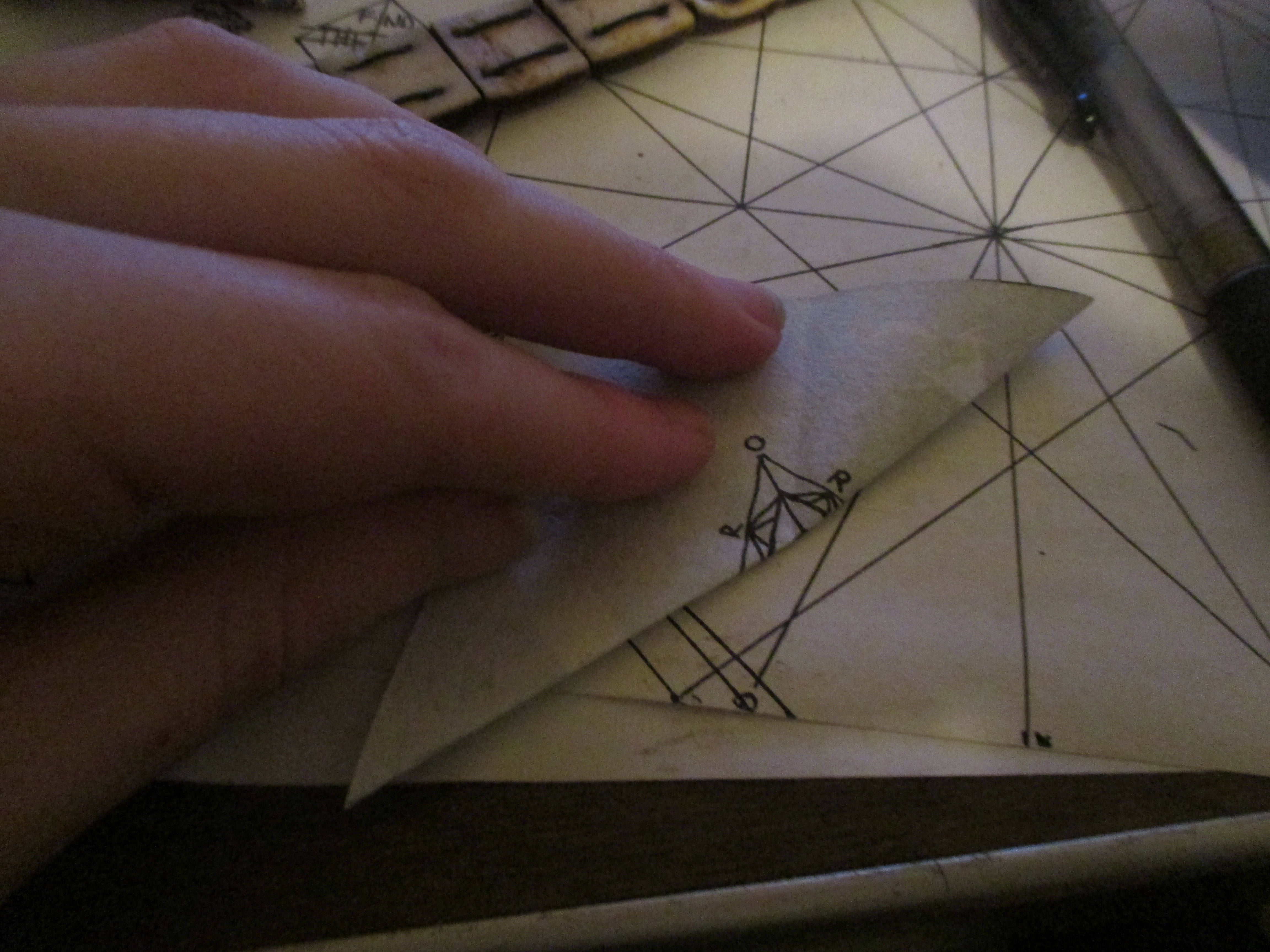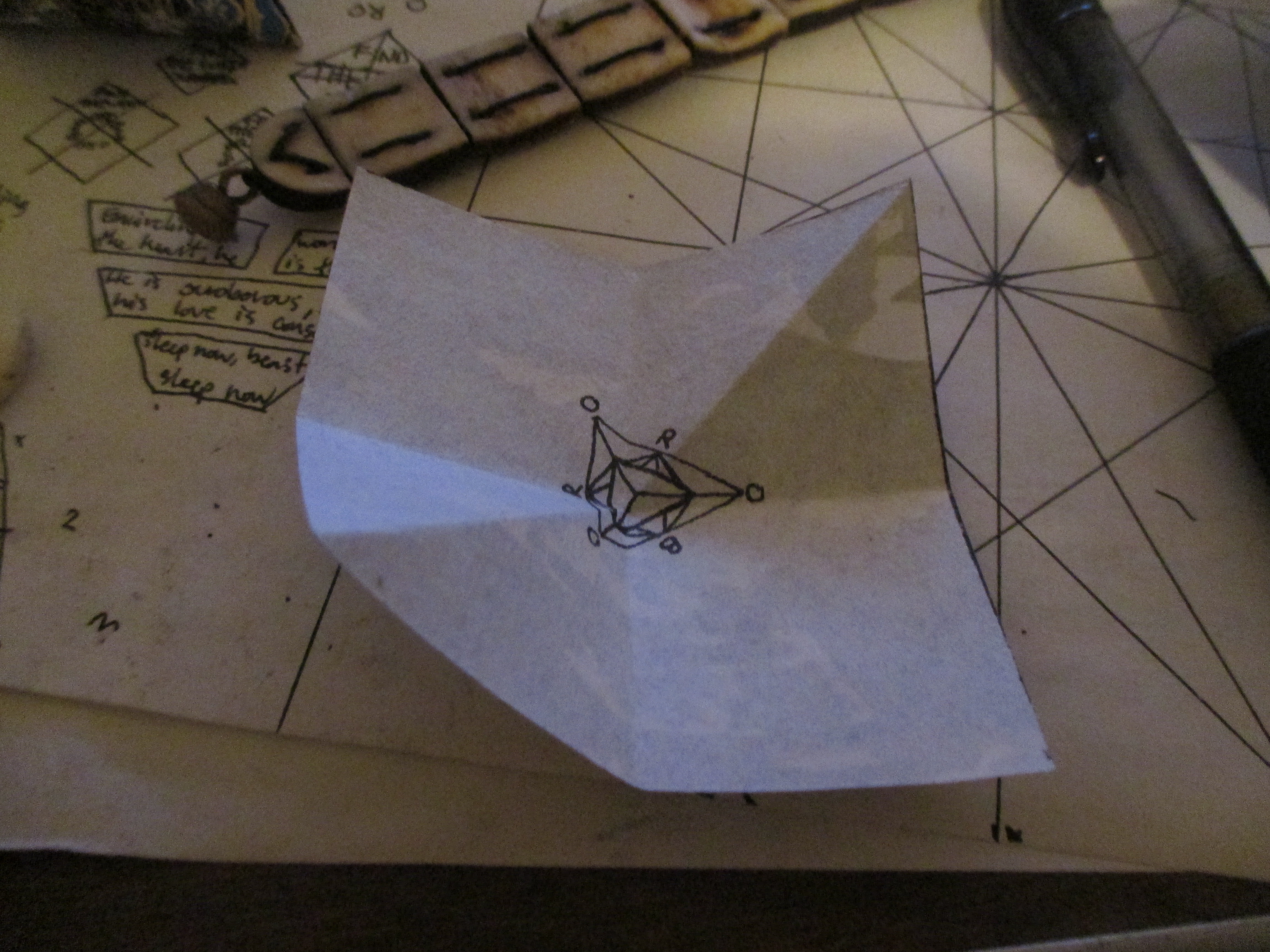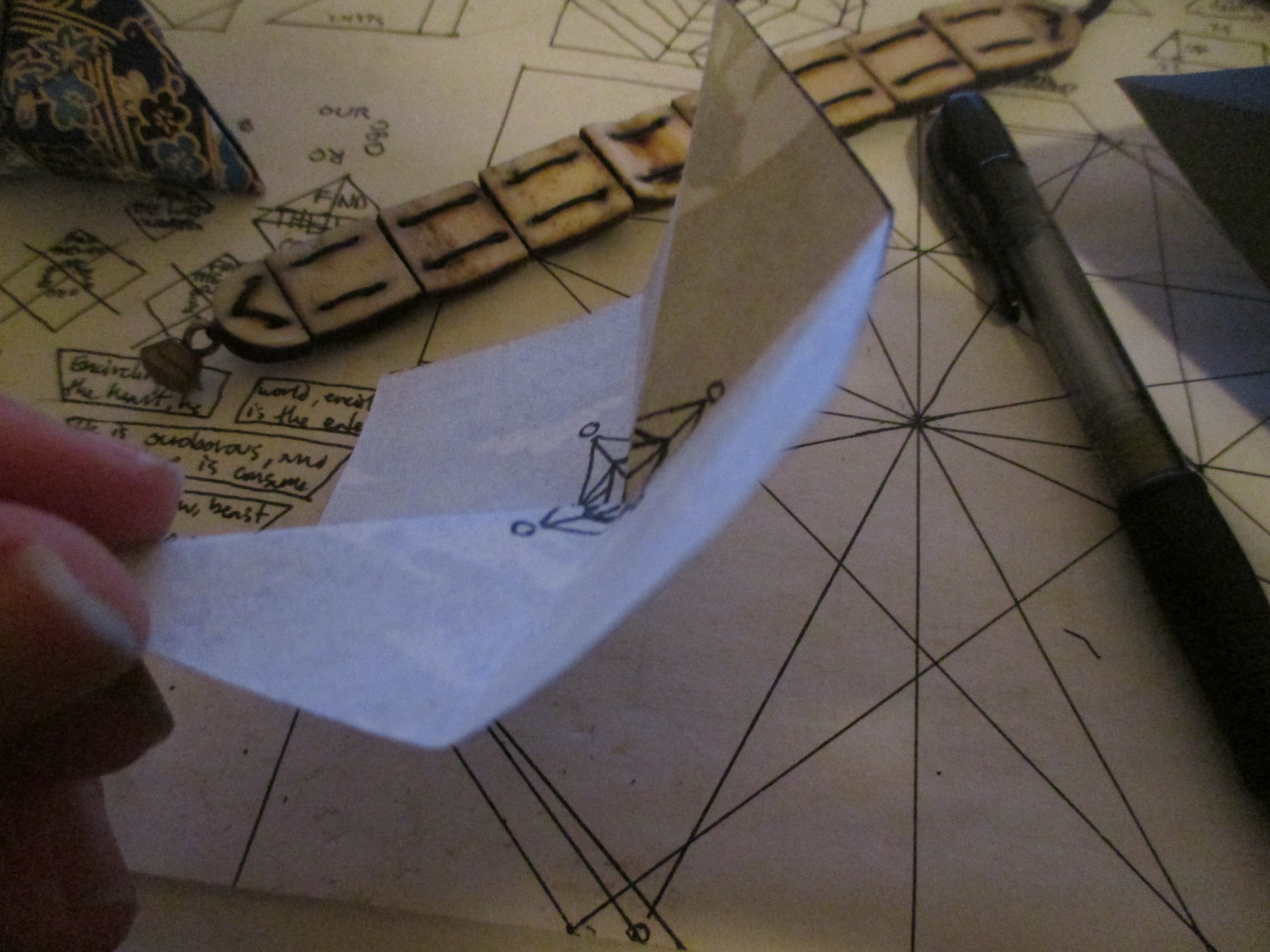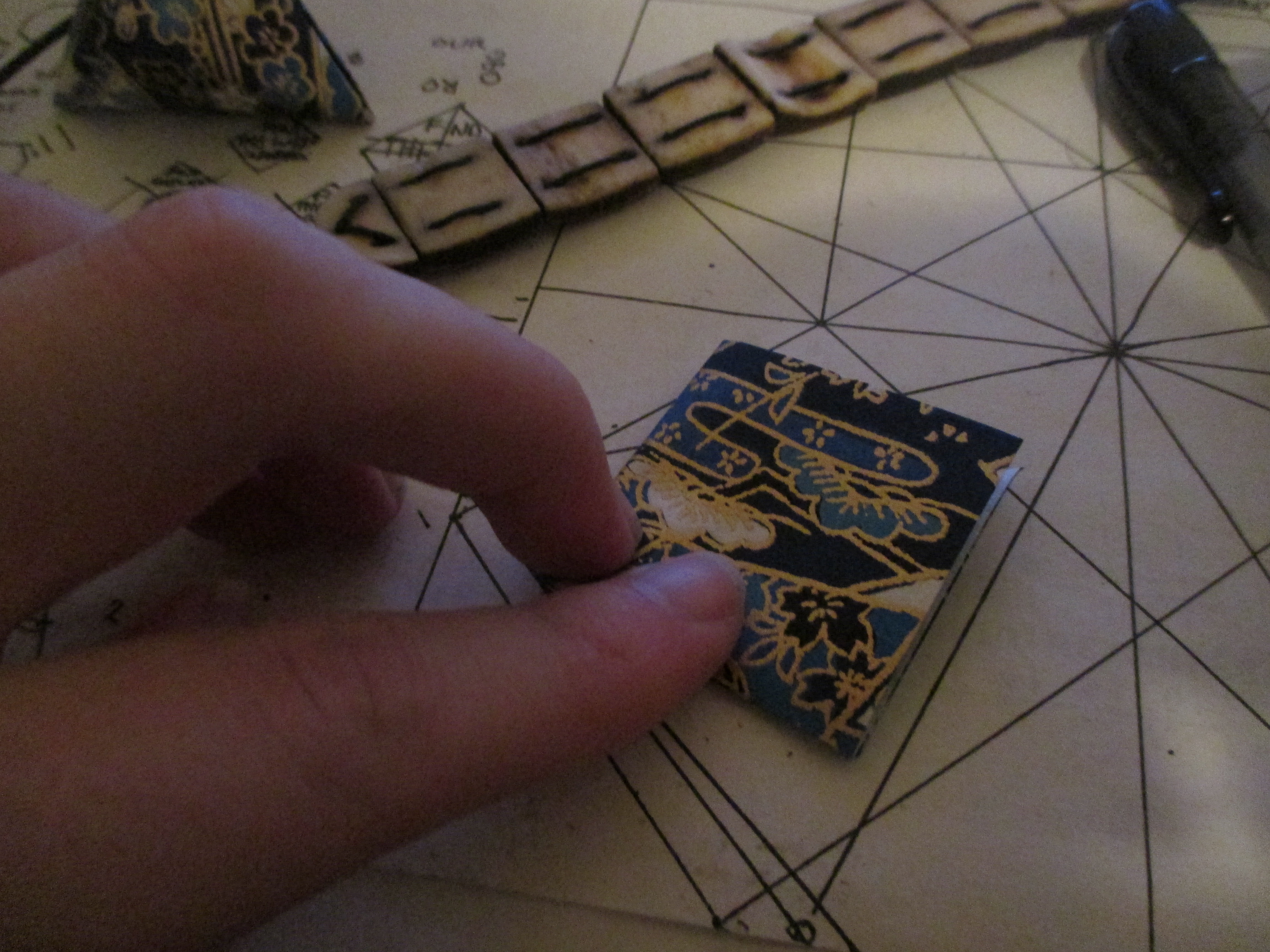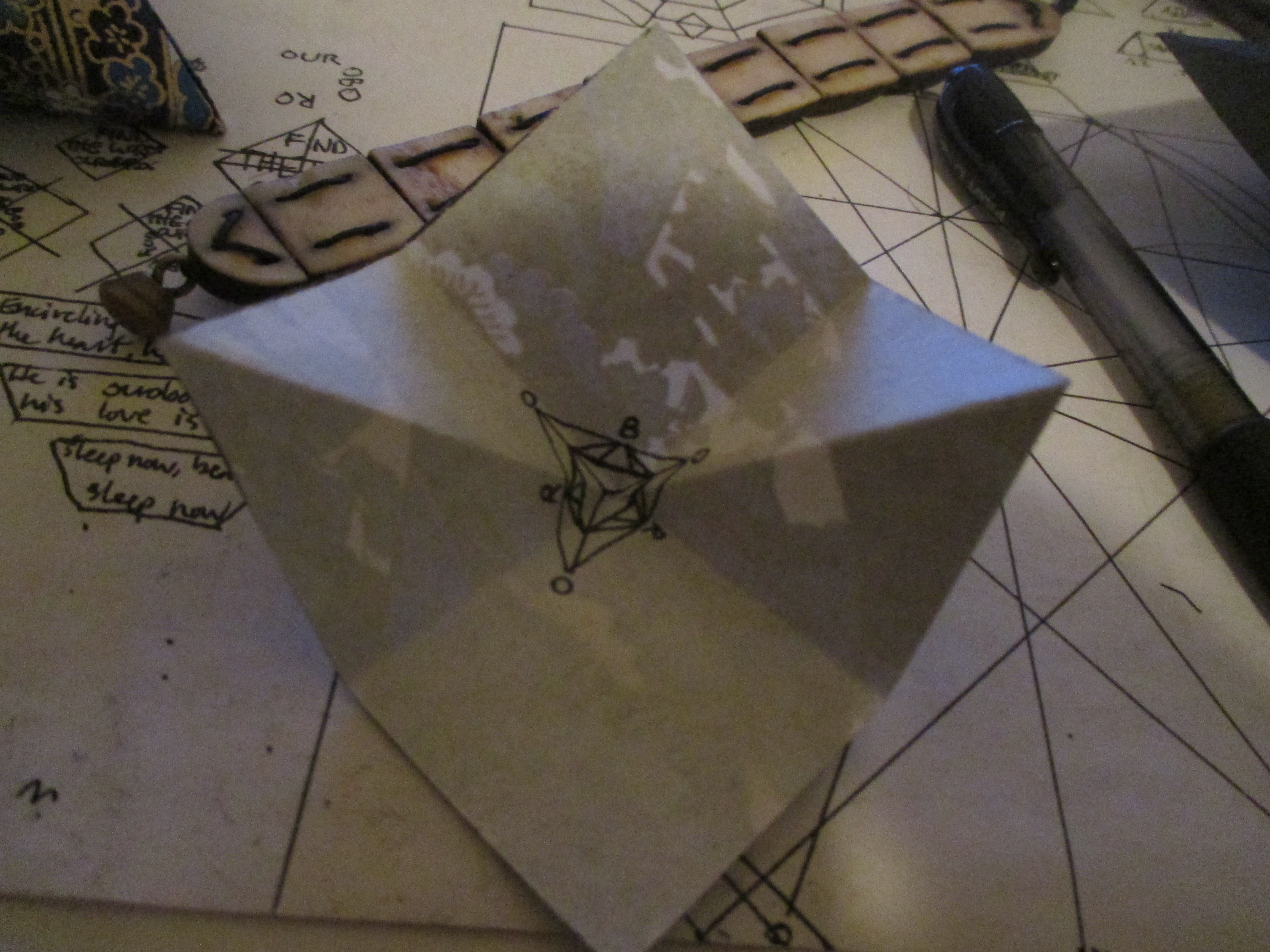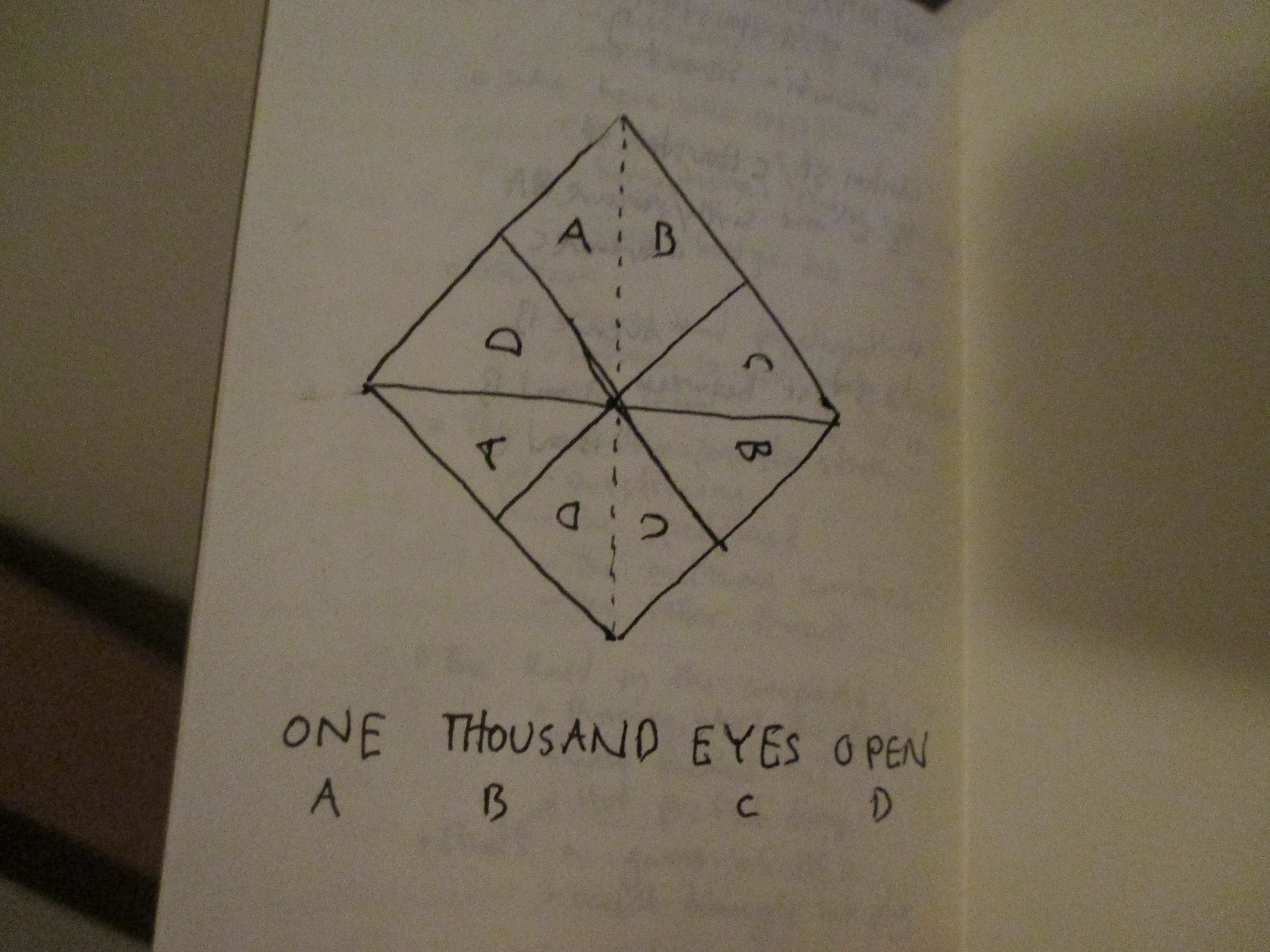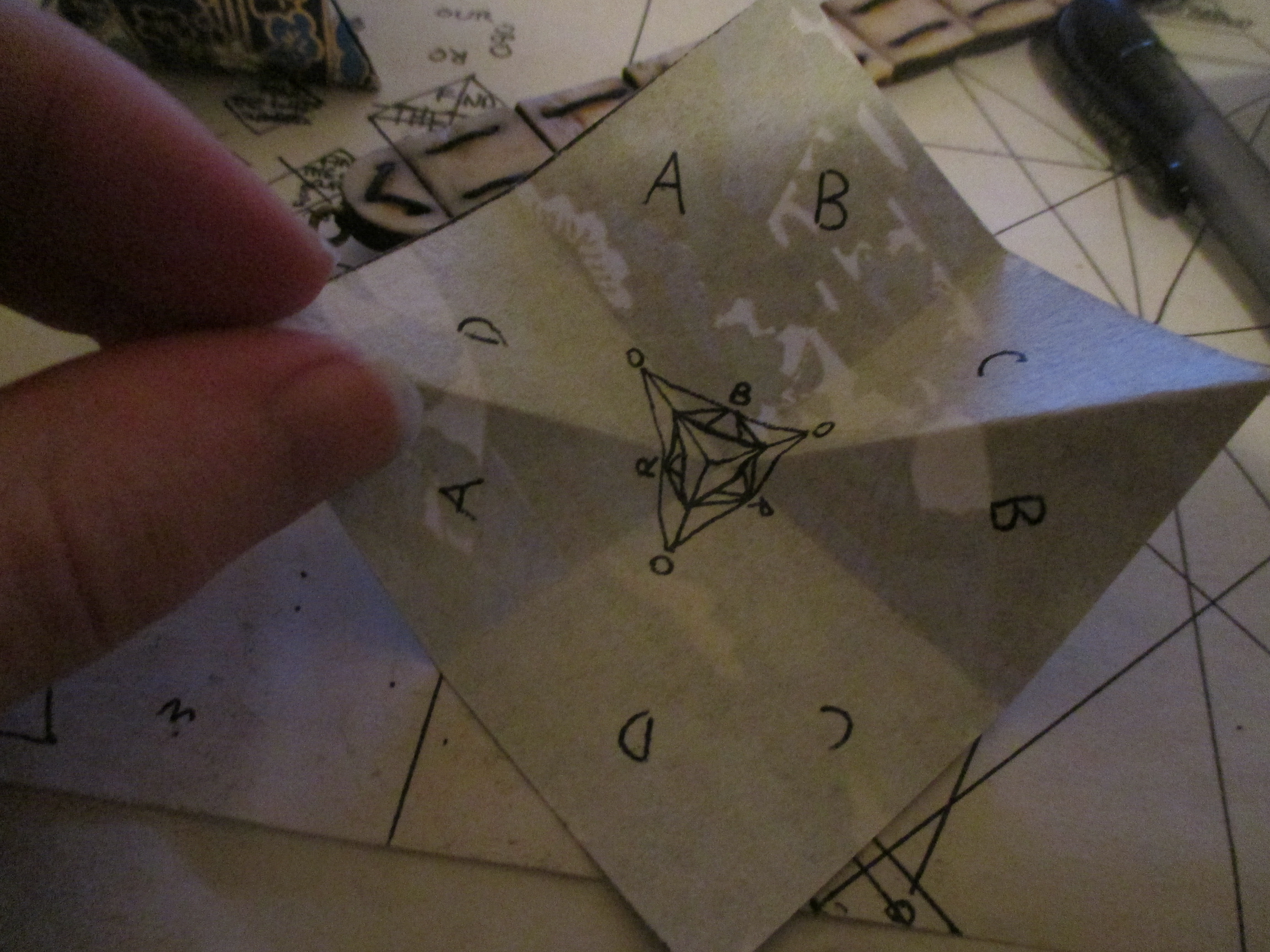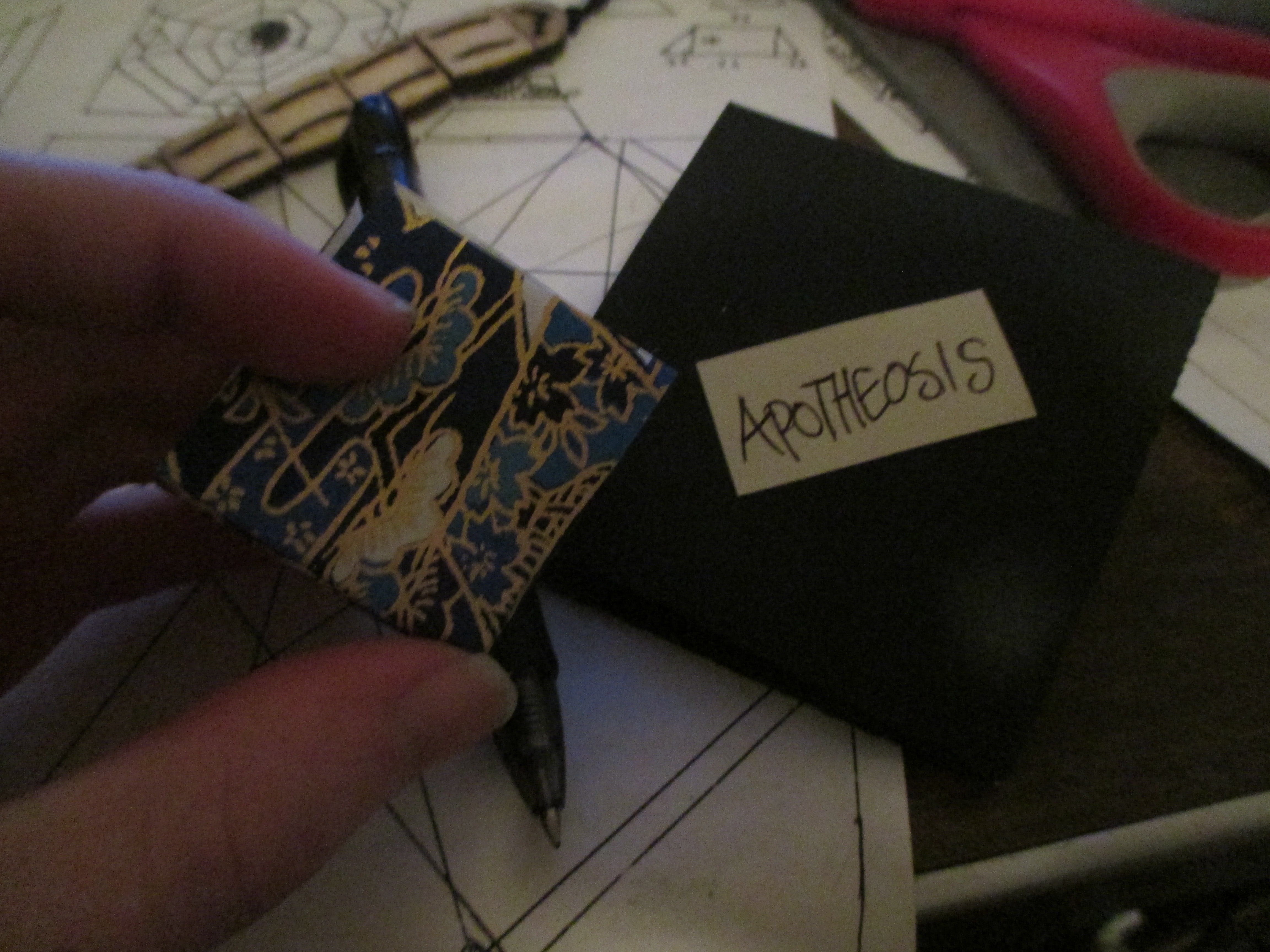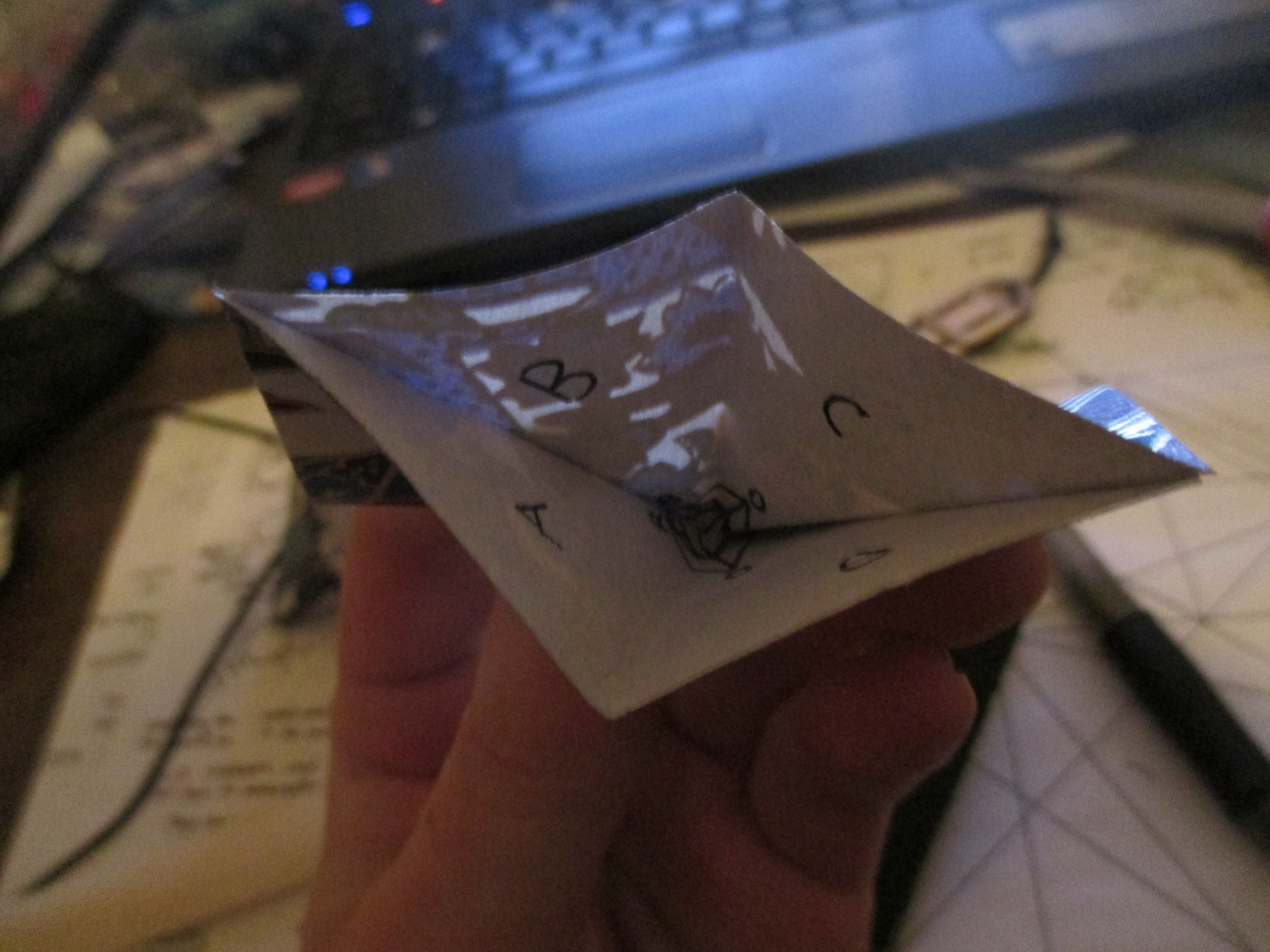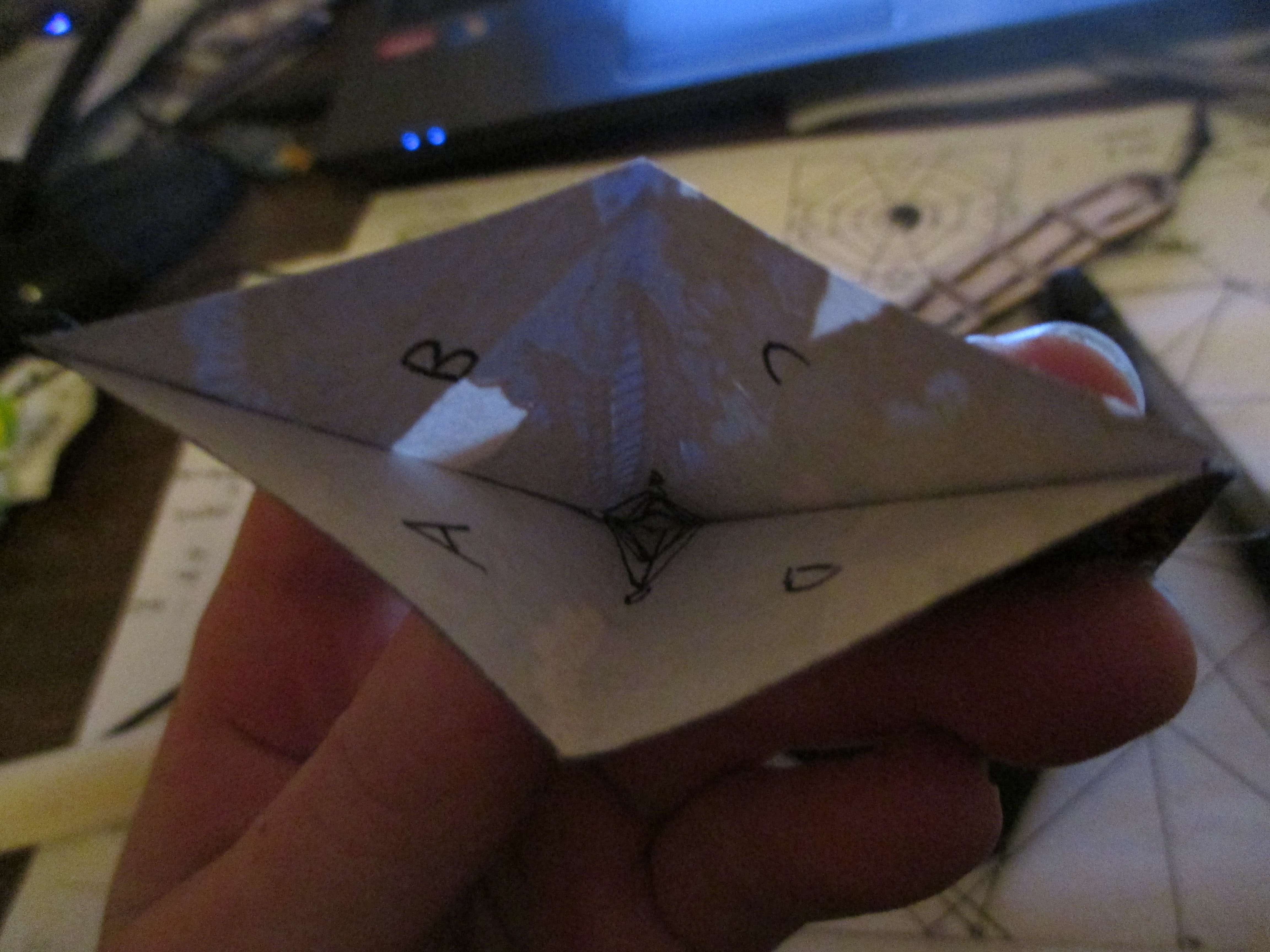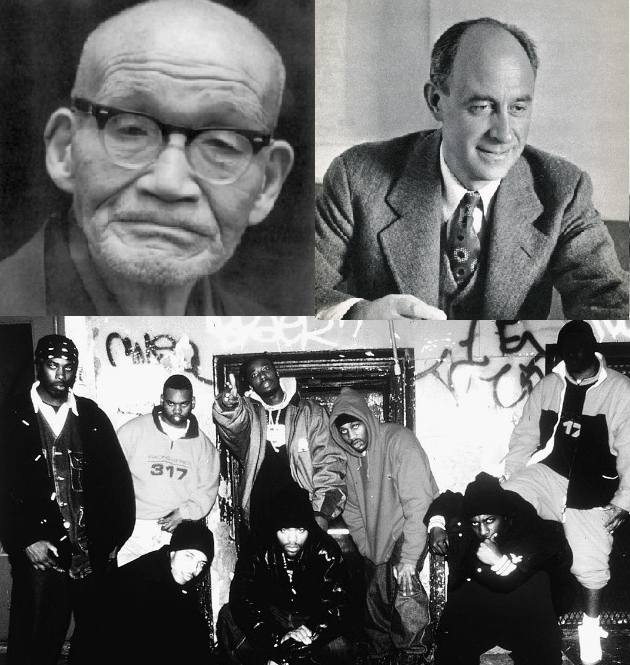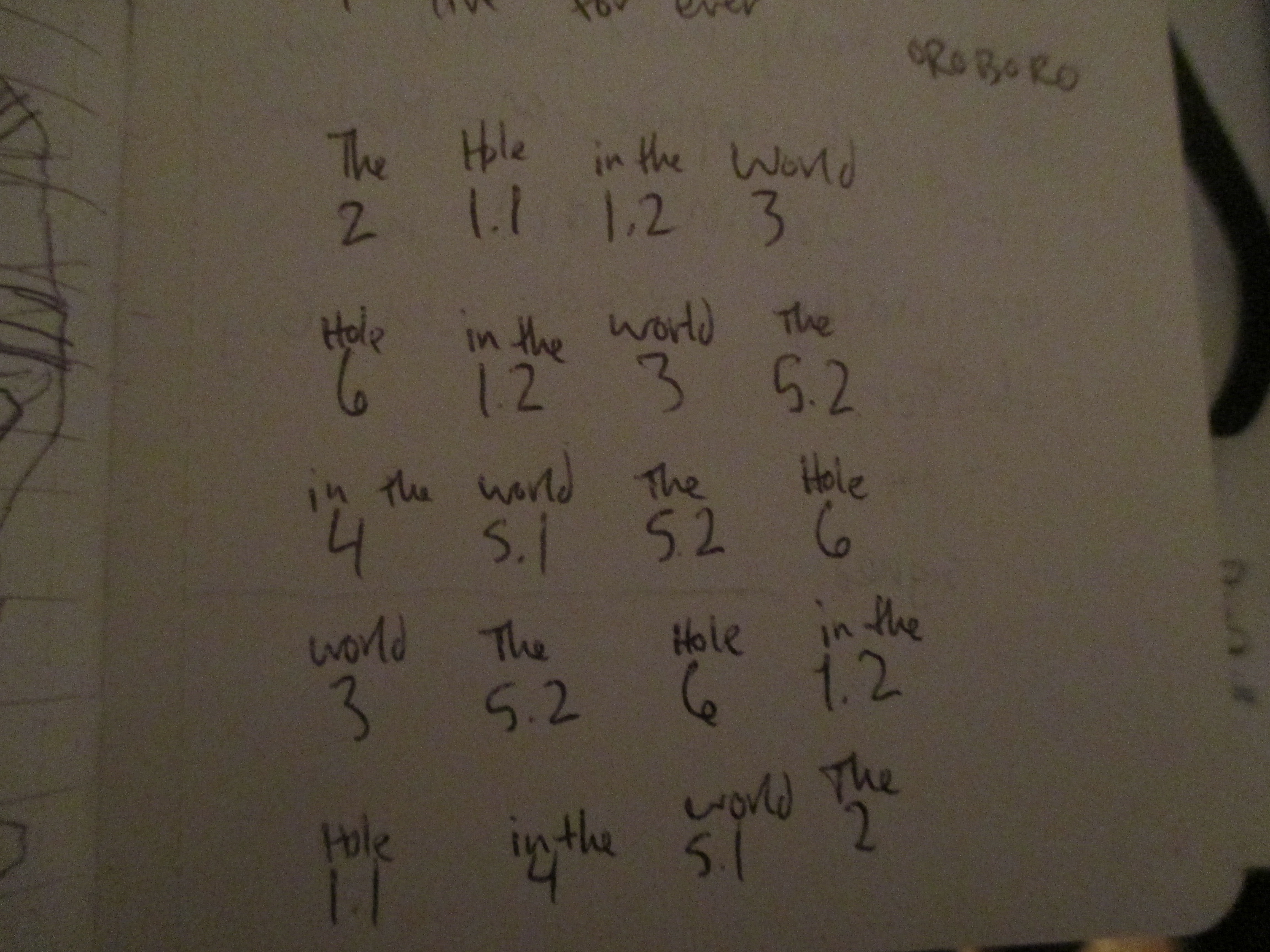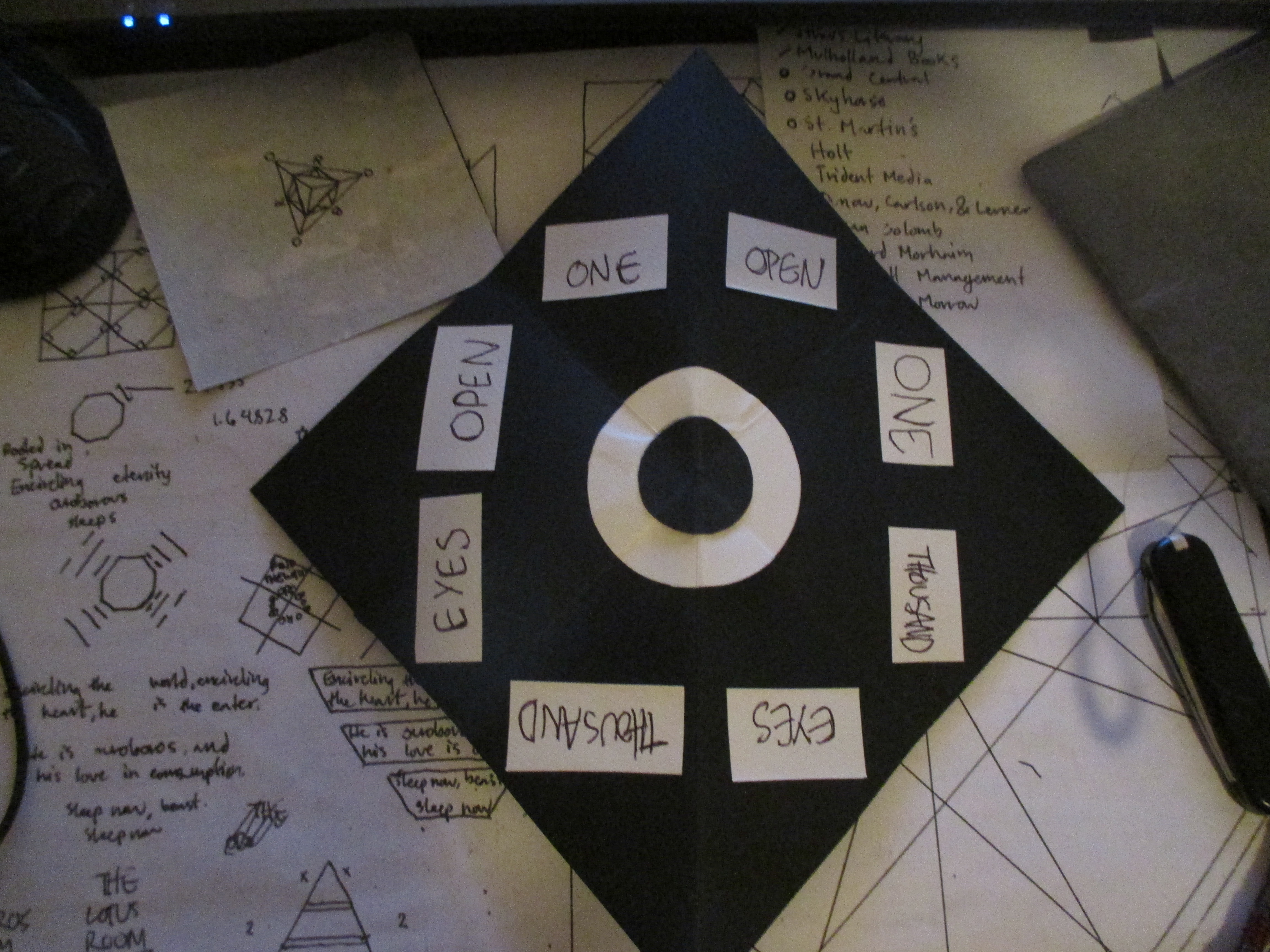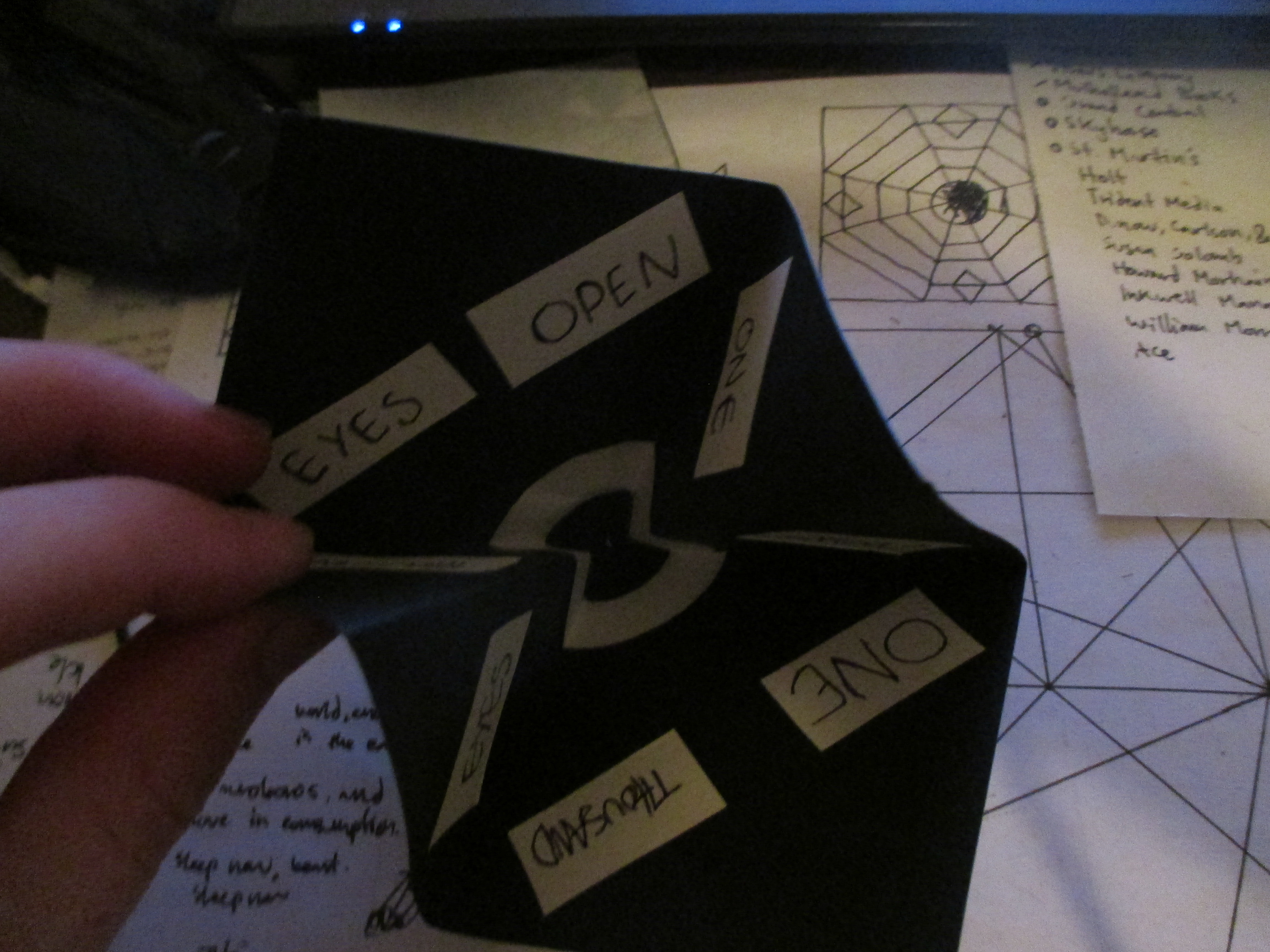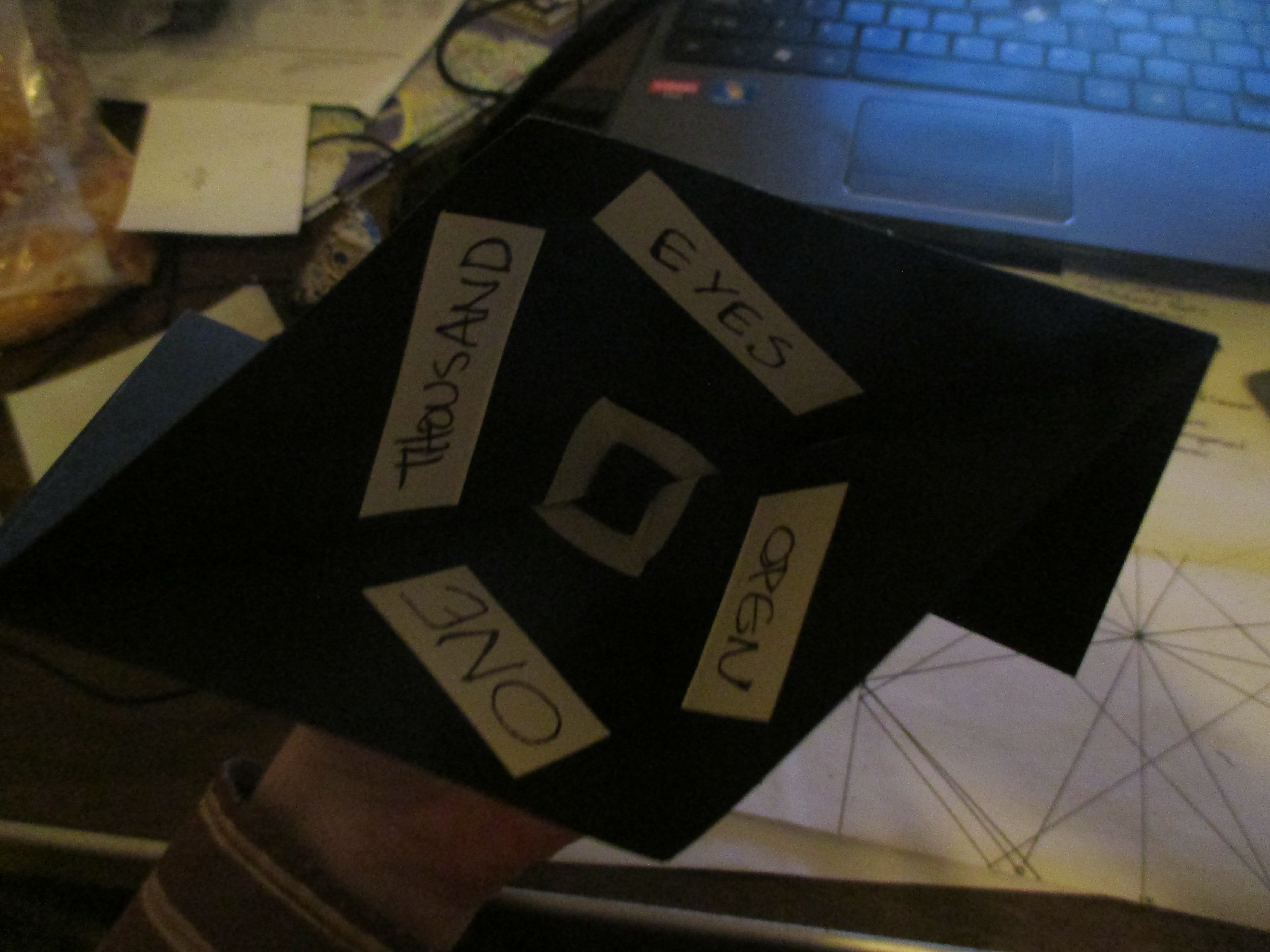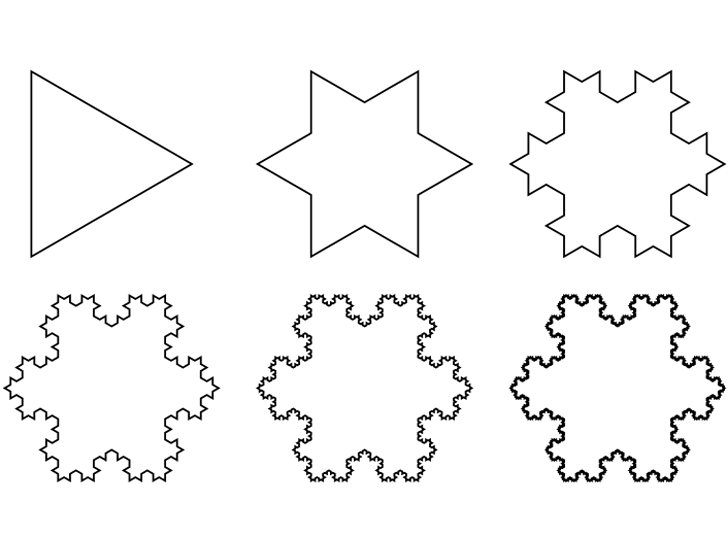When I was taking Art of the Book, we learned that there are things called ‘artist books.’ Artist books use their format and shape to tell a story, along with the words themselves. That fascinated me. I wanted to do something like that. I began sketching out the idea for an origami artist book in my notes. This project would become “ANATMAN,” a blend of trigonometry, origami, Buddhism, Kabbalah, alchemy, and letterpress printing.
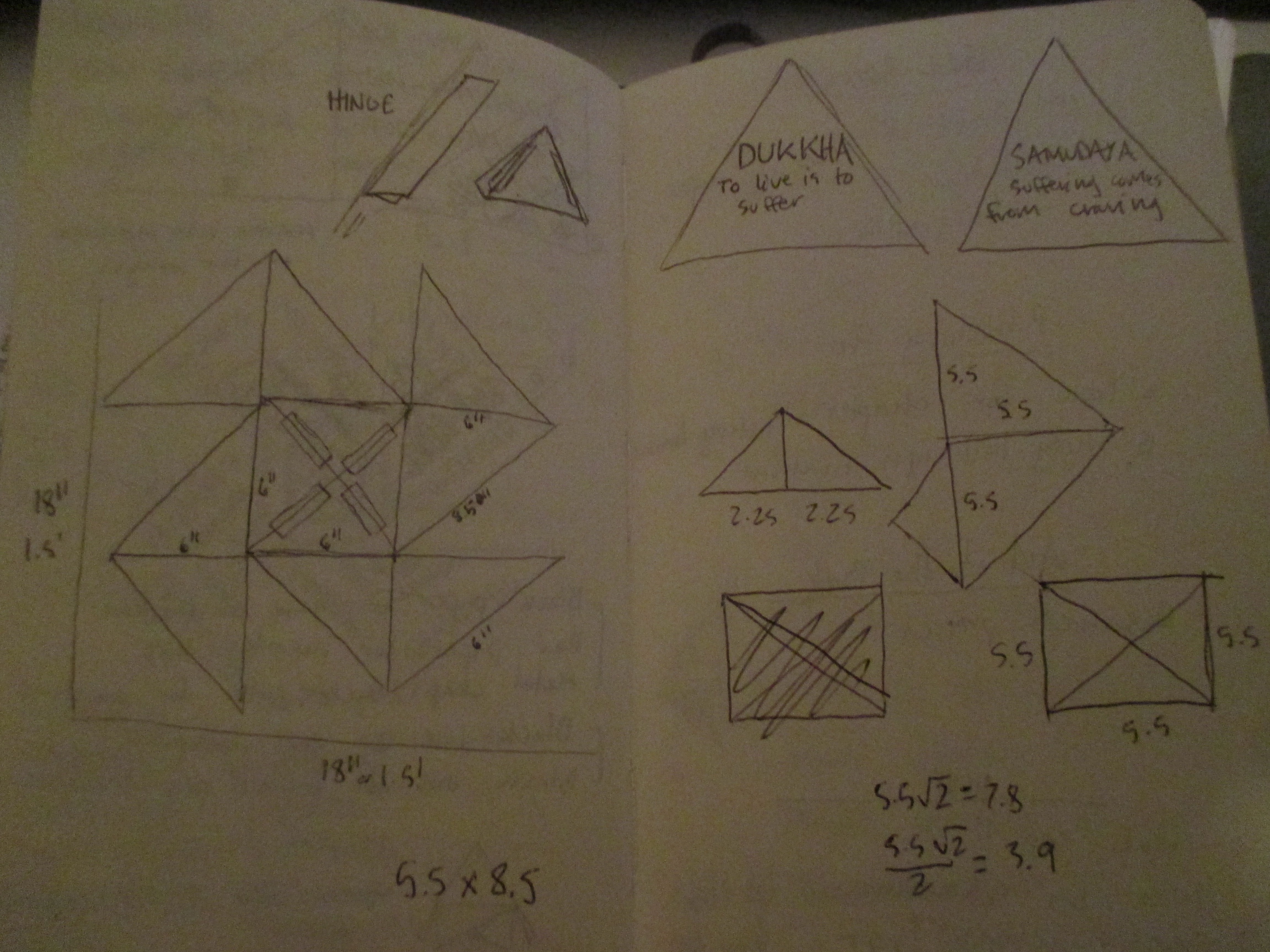
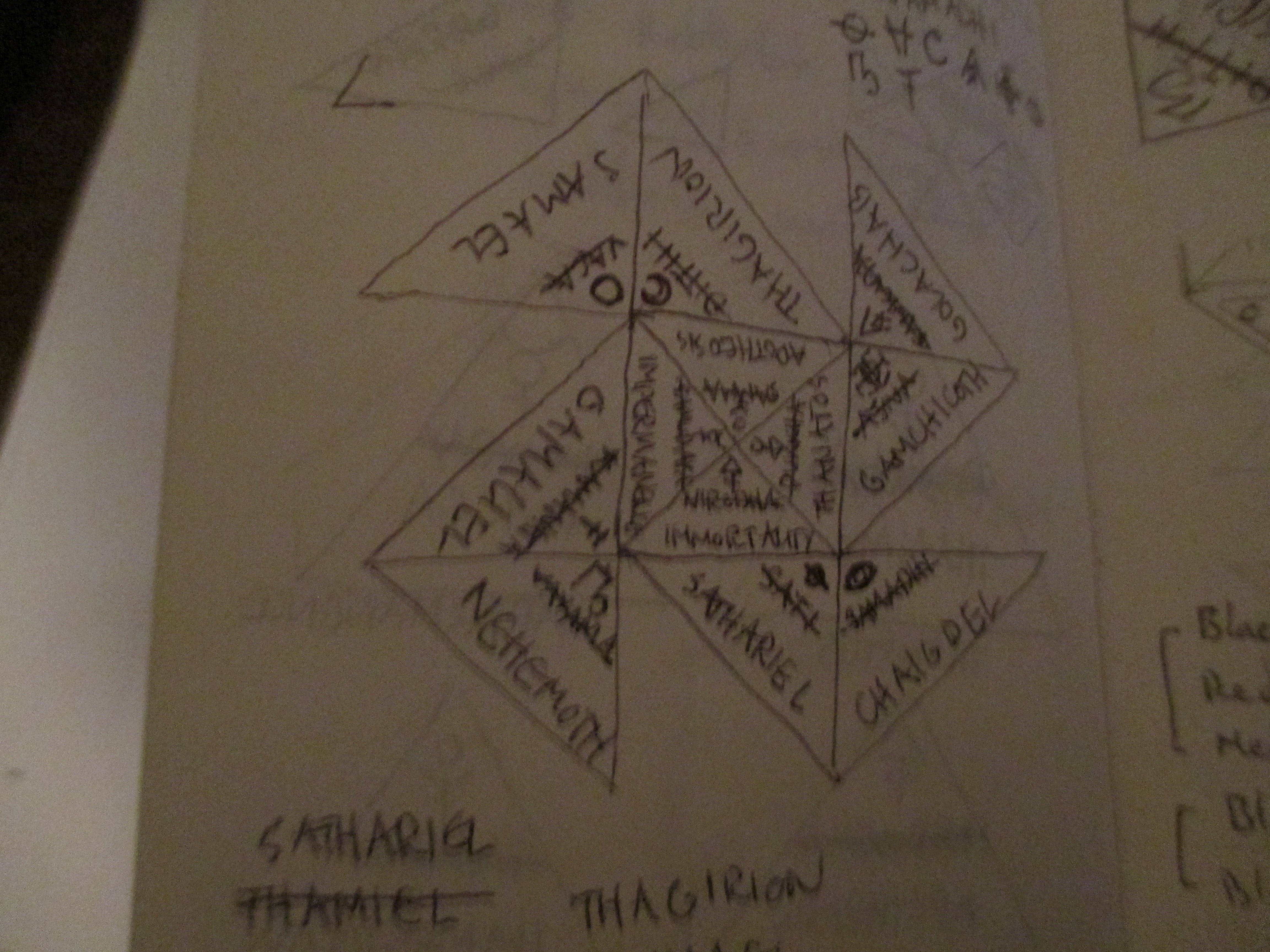
ANATMAN was the culmination of years of reading and thinking, and in many ways it’s a manifesto for the Occult Triangle Lab, despite only containing 16 words. It contains some of the ideas that have haunted and inspired me since I was a kid, along with the ideas I was beginning to develop in college. To explain the making of ANATMAN, you have to know where it began.
Eternity, Infinity, and Enlightenment
In Hitchhikers’ Guide to the Galaxy, there’s a machine called The Total Perspective Vortex. It’s universally recognized as the most horrible torture device in existence. It does one thing:
“When you are put into the Vortex you are given just one momentary glimpse of the entire unimaginable infinity of creation, and somewhere in it there’s a tiny little speck, a microscopic dot on a microscopic dot, which says, ‘You are here.'”
That stuck with me.
In Hat Full of Sky by Terry Pratchett, there’s a creature called a hiver. It’s an incorporeal mass of sight, smell, hearing, and a thousand other senses, and it rolls through the world incorporating more beings into itself. There’s no way to see it, and no way to kill it. The main character, Tiffany Aching, spends the book trying to find a way to beat it, or run from it, but she meets it in the end, and lets it into her mind. When she does, she realizes that the hiver can sense everything around it with perfect clarity, and can’t stop. This is what it says:
“‘Do you know what it feels like to be aware of every star, every blade of grass? Yes. You do. You call it ‘opening your eyes again.’ But you do it for a moment. We have done it for eternity. No sleep, no rest, just endless… endless experience, endless awareness. Of everything. All the time. How we envy you, envy you! Lucky humans, who can close your minds to the endless deeps of space! [ …] You build little worlds, little stories, little shells around your minds, and that keeps infinity at bay and allows you to wake up in the morning without screaming!'”
And that stuck with me, too.
I remember looking out the window of my college dorm room at the sun rising. I’d stayed awake all night, working on a paper. It was so cold in the room that I couldn’t feel my fingers or toes, I hadn’t eaten anything, and I hadn’t changed my clothes for two days. I got up from my chair and stood in front of the window, listening to the quiet and watching the light 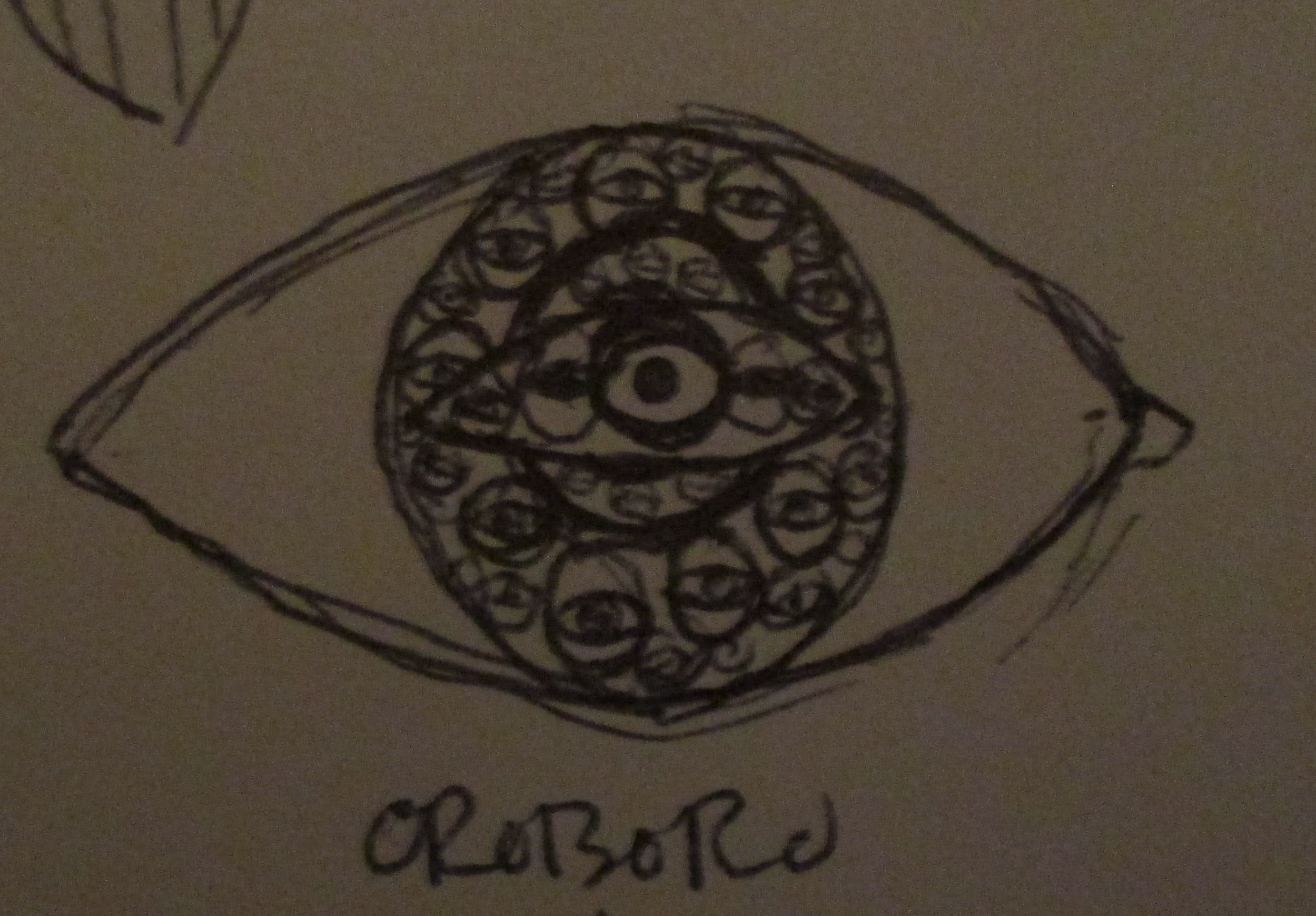 creep over the buildings. It occurred to me that days and nights don’t build walls between you and the past—whether the sun is up or not, there is one continuous hour that stretches out forever, uniting the entire thread of your life. There’s a feeling of disappearing as you realize that you’re stretched from horizon to horizon, from birth to death, and that your life is carried out second by second. This is the same feeling I got when Mr. Powell taught us about Zeno’s Paradox all those years ago: the feeling that eternity is lurking in every nook and cranny, tearing at the seams of my mind. An hour can be an eternity, and standing at that cold window at 5 AM, I understood what hell could feel like.
creep over the buildings. It occurred to me that days and nights don’t build walls between you and the past—whether the sun is up or not, there is one continuous hour that stretches out forever, uniting the entire thread of your life. There’s a feeling of disappearing as you realize that you’re stretched from horizon to horizon, from birth to death, and that your life is carried out second by second. This is the same feeling I got when Mr. Powell taught us about Zeno’s Paradox all those years ago: the feeling that eternity is lurking in every nook and cranny, tearing at the seams of my mind. An hour can be an eternity, and standing at that cold window at 5 AM, I understood what hell could feel like.
It seems like the human soul unravels when it’s faced with eternity, and that’s what makes enlightenment so frightening and fascinating: to reconcile with the universe, you have to embrace eternity, the universe, everything, but that risks being destroyed under the sheer immensity of it all. So what kind of person backs away from that, gets so frightened that they put themselves an infinite distance away from enlightenment? How do you live with the ticking clock of death and the weight of eternity?
Zen Buddhism
Zen heavily influenced the project and my thinking about eternity and enlightenment, because Buddhism has a unique answer to the question of how do deal with the self.
Buddhist monks frighten and fascinate me, as I’ve mentioned before, but Zen most of all. Zen monks may ask you who you are. You might say you are a writer, a leader, a woman, a daughter, but they will shake their heads and say “A writer writes, a leader leads, and there are many women and daughters. Who are you when you are not writing or leading? Are you everyone’s daughter?” These are the absurd, silly questions that give Buddhist monks their reputation for being harmless, smiling, wrinkly, bald men. Zen monks are the same people who came up with the famous “What’s the sound of one hand clapping?”
What most people don’t know is that that question, about the clapping, is a koan, a phrase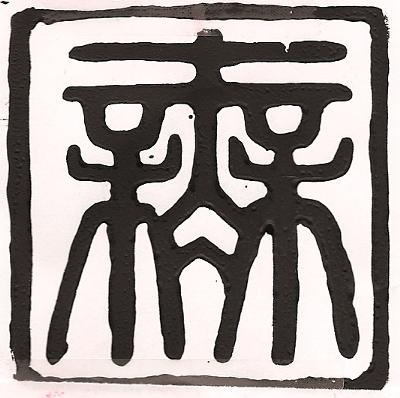 that monks are supposed to meditate on. How can one hand clap? It is impossible. You’re supposed to give an answer. But you can’t answer. There is no answer, because the question itself is wrong. The lesson, if you can arrive at it through meditation, is that questions can be wrong, not just answers. This idea is called mu. And just like the question of one hand clapping, the question “Who are you?” is equally wrong, because everything you conceive of as “you” is wrong.
that monks are supposed to meditate on. How can one hand clap? It is impossible. You’re supposed to give an answer. But you can’t answer. There is no answer, because the question itself is wrong. The lesson, if you can arrive at it through meditation, is that questions can be wrong, not just answers. This idea is called mu. And just like the question of one hand clapping, the question “Who are you?” is equally wrong, because everything you conceive of as “you” is wrong.
This is where Buddhism stop seeming so happy and benevolent.
“You” are an illusion, a pile of hungers screaming to get fed, wrapped in a bundle that’s held together by nothing. Enlightenment is embracing your own annihilation, because the truth is that “you” do not exist. “You” is no-self, no-soul. You are Void, because you are the universe, and the universe is Void. There are no divisions anywhere, no up or down, no day or night, and no division between life and death. When you understand this, and embrace your annihilation, you will understand no-self, which is translated as anatman.
The First Noble Truth of Buddhism is that life is suffering. Impermanence is the only constant. It is called annica. It means that nothing lasts forever, that there is no state of being that can last for an eternity. The desperation for something enduring, whether it’s a sense of self or happiness, is what causes suffering. The search for a way out, a way to become eternal, that is the ultimate path to suffering, because you can never attain it. Trying to become eternal, or immortal, is the farthest distance one can get from enlightenment.
i spent a lot of time reading about Zen, and I thought “What kind of person would choose that path, the one that leads away from enlightenment and annihilation, toward desperation and eternity? What kind of fear or insanity would that take?”
These are the thoughts that went into ANATMAN.
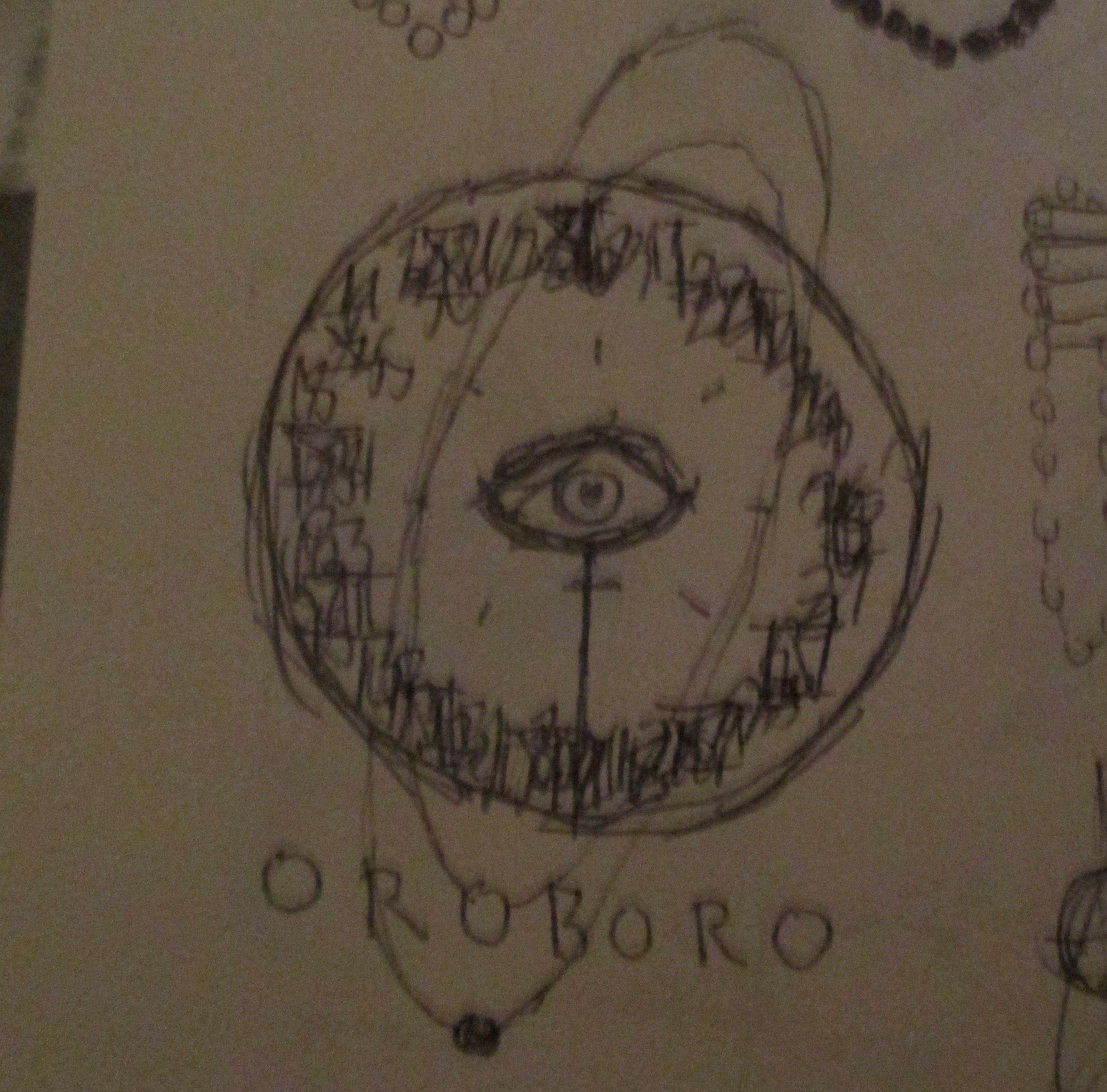
Next up in Part 2: Oroboro and the Qliphoth.
Click the circular button below to Share.



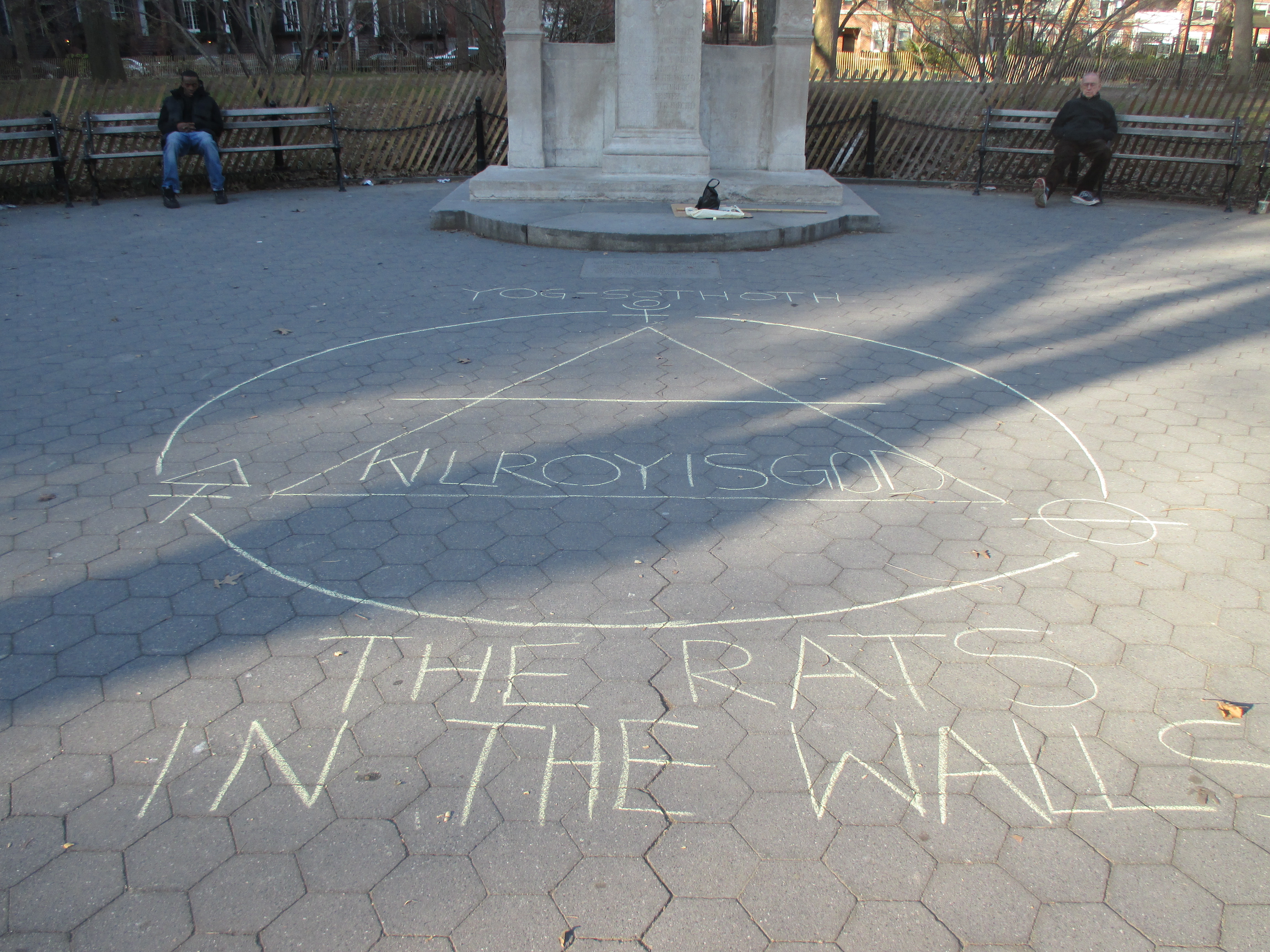


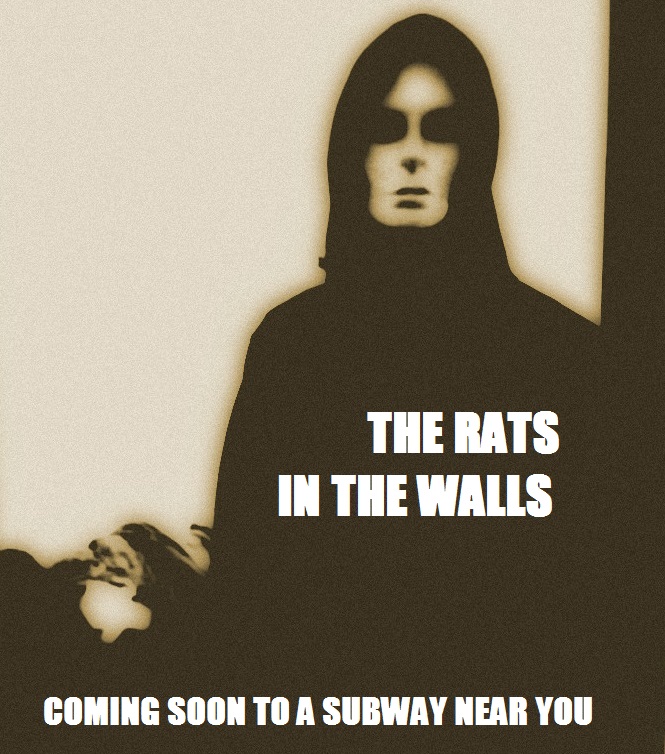
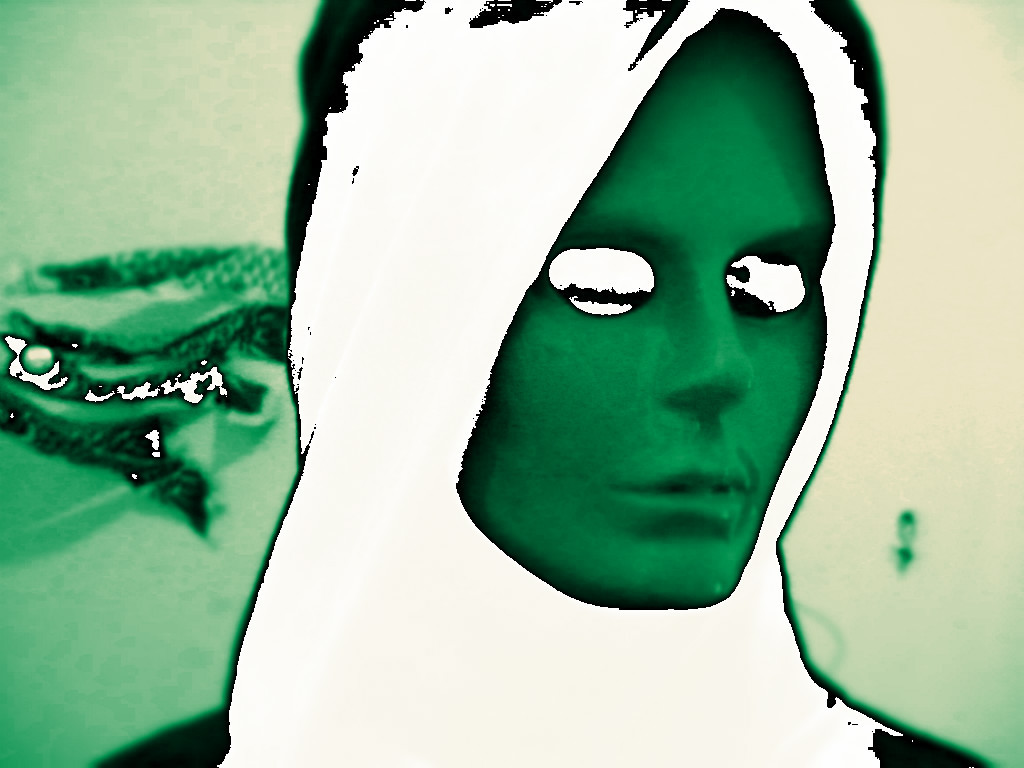
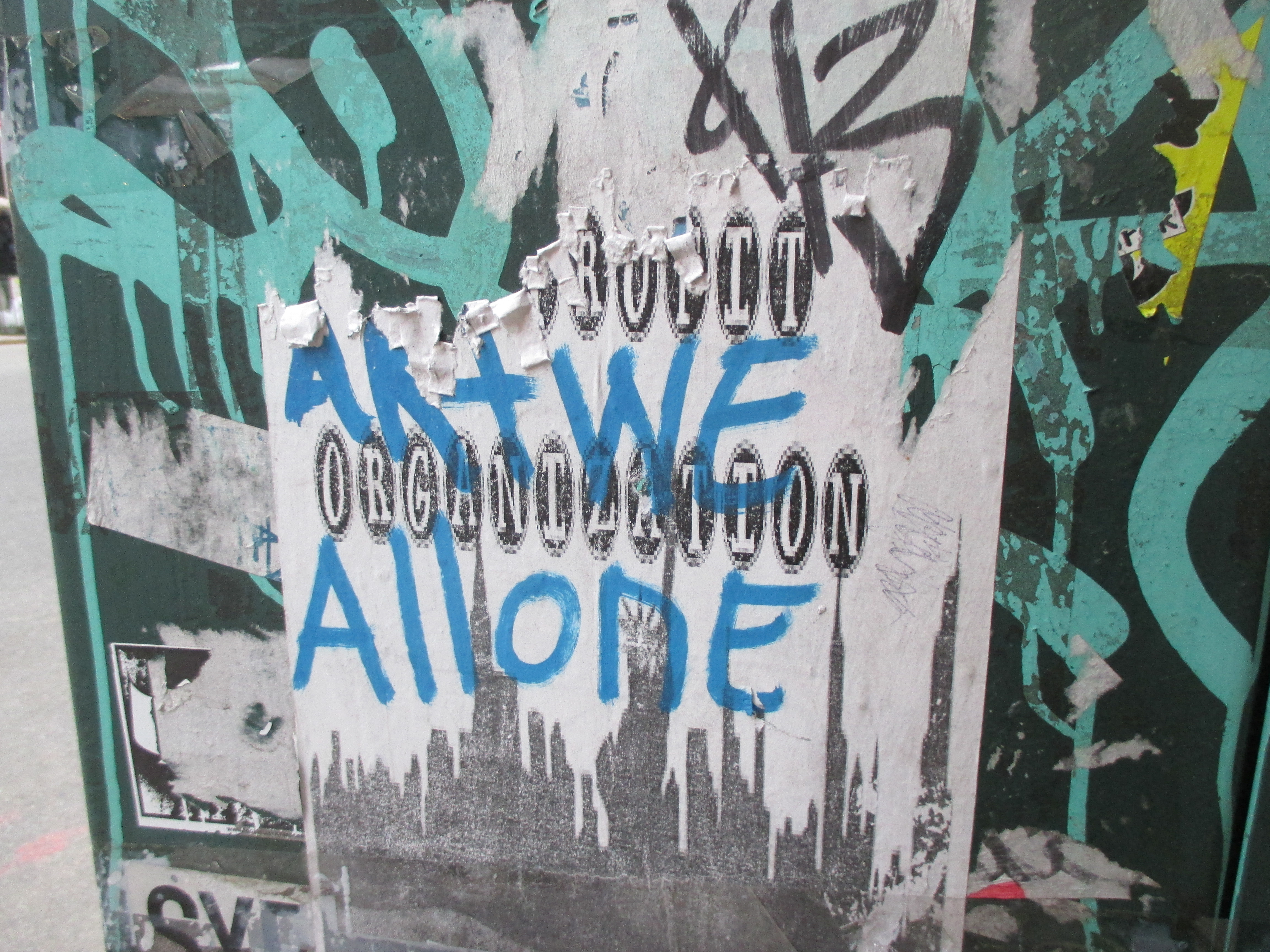

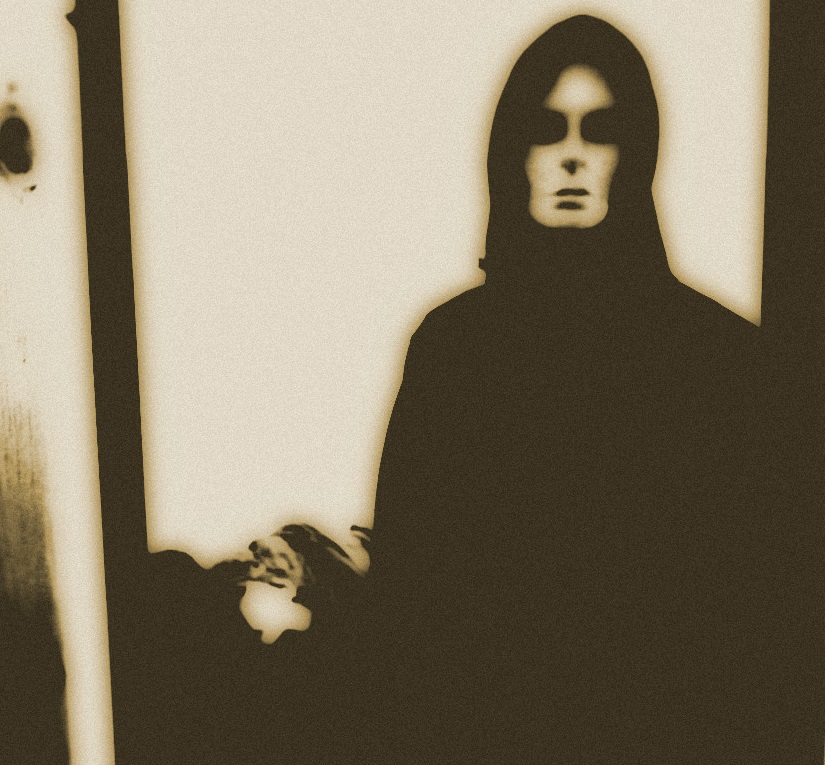

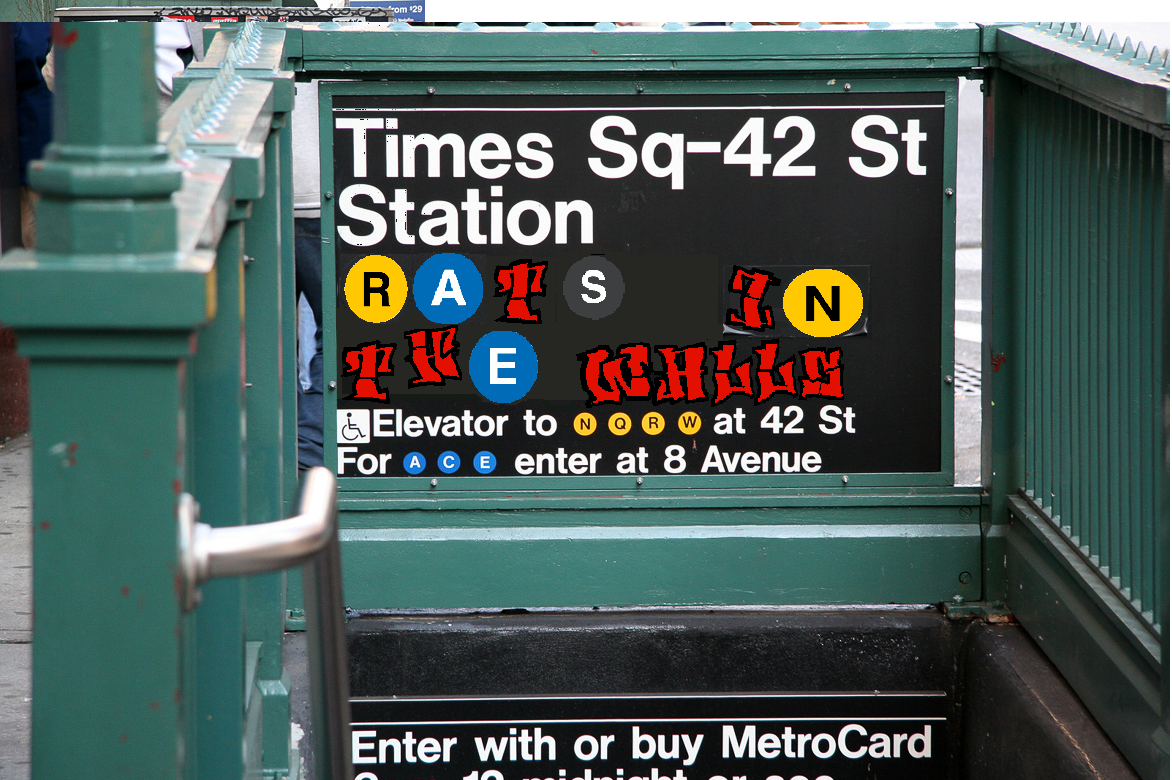
 In Kabbalah, there is the Sephiroth, the Tree of Life and Knowledge, which is the ten-part route to Ein Sof, with Malkuth, or earthly existence, existing on the lowest branch of the Sephiroth. You can ascend the Tree or sit in Malkuth forever. In Buddhism, you would be thrown into the Wheel of Samsara again after death and be reincarnated, repeating life and death forever.
In Kabbalah, there is the Sephiroth, the Tree of Life and Knowledge, which is the ten-part route to Ein Sof, with Malkuth, or earthly existence, existing on the lowest branch of the Sephiroth. You can ascend the Tree or sit in Malkuth forever. In Buddhism, you would be thrown into the Wheel of Samsara again after death and be reincarnated, repeating life and death forever.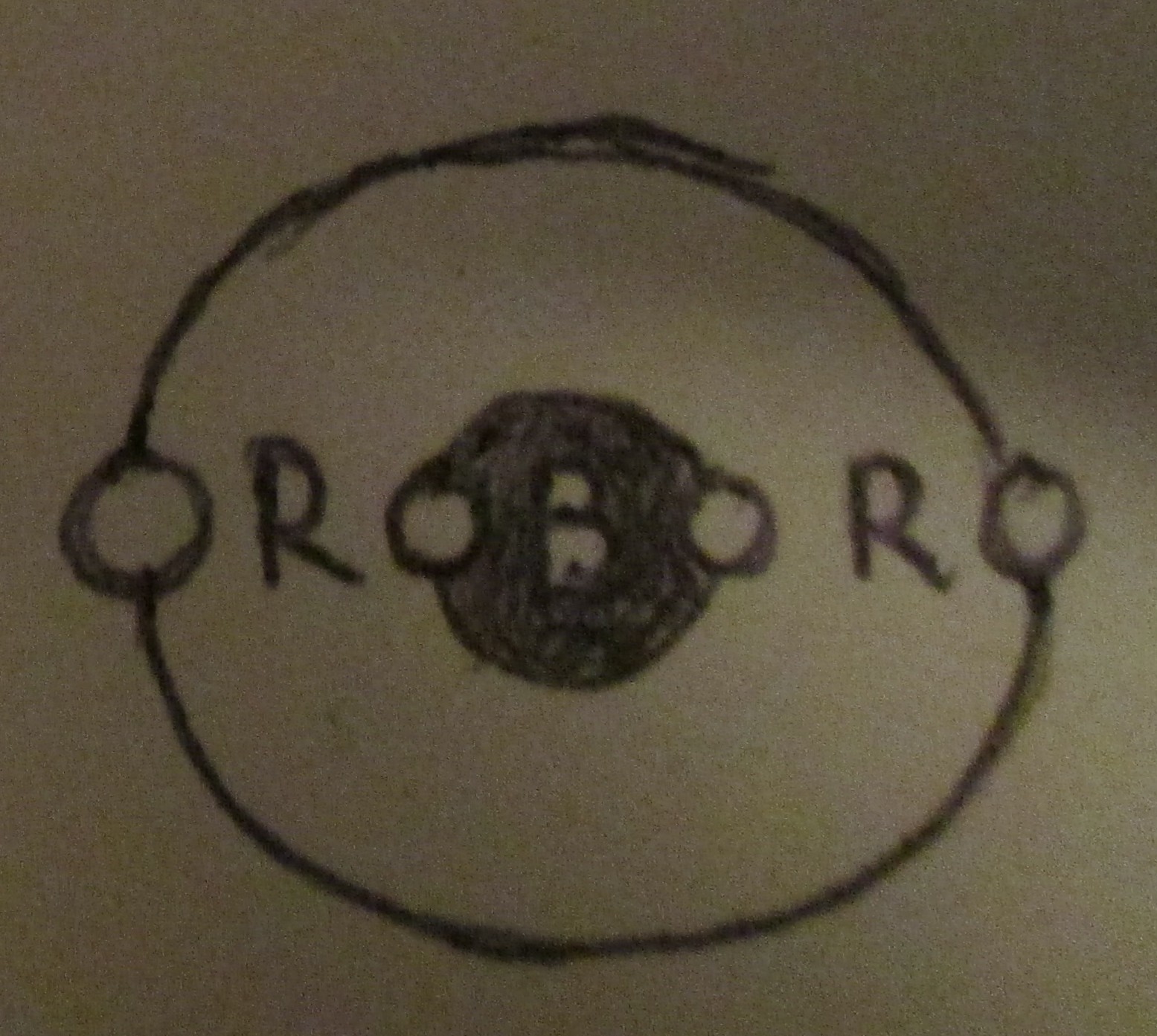



 that monks are supposed to meditate on. How can one hand clap? It is impossible. You’re supposed to give an answer. But you can’t answer. There is no answer, because the question itself is wrong. The lesson, if you can arrive at it through meditation, is that questions can be wrong, not just answers. This idea is called mu. And just like the question of one hand clapping, the question “Who are you?” is equally wrong, because everything you conceive of as “you” is wrong.
that monks are supposed to meditate on. How can one hand clap? It is impossible. You’re supposed to give an answer. But you can’t answer. There is no answer, because the question itself is wrong. The lesson, if you can arrive at it through meditation, is that questions can be wrong, not just answers. This idea is called mu. And just like the question of one hand clapping, the question “Who are you?” is equally wrong, because everything you conceive of as “you” is wrong.
